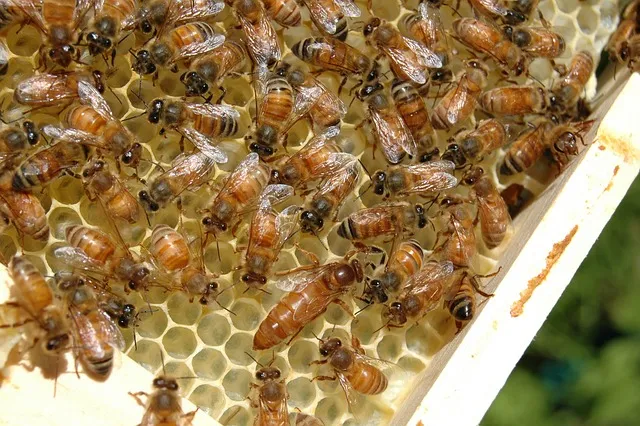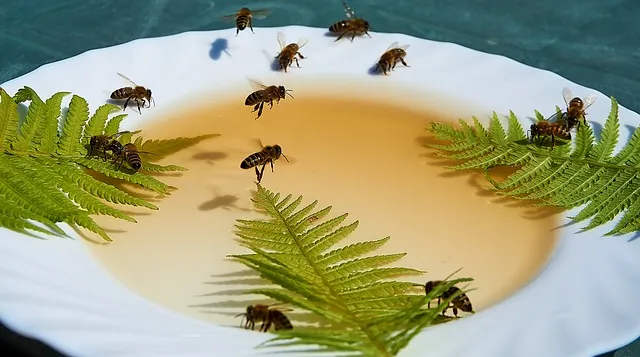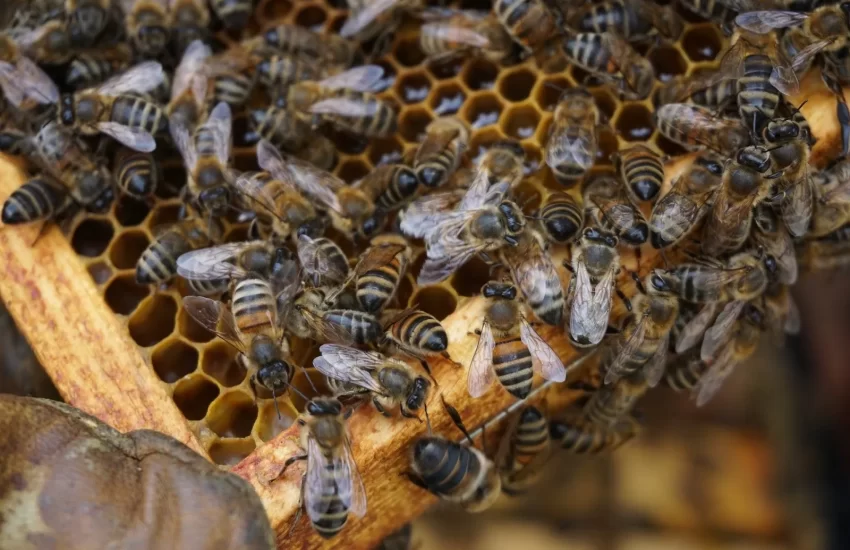Providing Sugar Water to Bees – Supplementing Bees
When nectar is unavailable, honey bees turn to their honey reserves in the hive. In such times, a beekeeper should monitor the honey stores because the bees will starve to death if they get depleted. You can help the colony to survive for a long time by supplying them with sugar. Though not comparable to natural nectar, it helps them to survive. And why not feed bees with honey? You may ask. Feeding the bees with honey from unknown sources is not advisable since it may contain spores of American foulbrood or other contaminants.
Besides times of nectar dearth, it is also advisable to feed newly installed bee packages. The sugar syrup stimulates wax production, which is essential in comb building. They also need energy to perform other activities in and outside the hive. You may also consider feeding the bees if they have insufficient stores in winter. Some beekeepers use sugar water when administering some medication to bees.
Similar Articles you may like to read –
Can bees survive without sugar water?
How to feed bees in summer and winters
How much honey should I leave for winter?
What is bees nectar? and the role of bee’s nectar?
Sugar Water for Bees
The most common way for supplemental feeding in bees involves mixing granulated sugar (white sugar) with water. When the sugar dissolves in water, it resembles the natural plant nectar in sweetness though not the same nutrition-wise. Honey bees prefer liquid sugar water to sugar granules since they are easier to process. They will require water to liquefy the sugar crystals. Weak colonies may be unable to gather sufficient water to liquefy the water and may starve to death.
Should you boil sugar water before feeding it to bees?
You prepare the syrup depending on the season. It is advisable to use hot water to help the sugar granules to dissolve completely. Be sure to boil water in a large container to hold the mixture. It is advisable not to boil the mix after adding water since the sugar can caramelize. This makes it partially indigestible and toxic to bees. Allow the syrup to cool to room temperature, put it in a feeder, and present it to the buzzing lovelies. You can add a drop or two of essential oils such as spearmint or lemon grass.
What is the ratio of sugar to water for bees?
Feeding Bees in Spring
Spring is a season of growth. The overwintered colonies are busy raising young ones while the newly installed colonies from packages are struggling to establish their hives. It is advisable to feed a thin sugar syrup (1 ratio of water to 1 ratio of sugar. This promotes brood rearing. The ratio applies throughout the season and also in summer. Some locations experience late summer drought with scanty blooming plants. This may cause the colony to halt or reduce brood rearing. Beekeepers should feed them to encourage brood rearing since the colony population may decrease significantly.
Fall Supplemental Feeding
At the end of fall, you may find some bee colonies struggling with low food stores. Such bees risk starvation in winter if not helped. They should be fed with a sugar syrup of (2:1) 2 parts of sugar and 1 part of water. This ration promotes them to make food for storage. By making it thicker, the dehydration process is made easier for bees. It is more likely to end up in honeycomb as stores for winter. Although it is not natural honey, the buzzing creatures store it. It is better to have it other than to starve in winter. Some of the reasons why bees need feeding in fall include bad weather, lack of forage, late swarms, and unhealthy colonies.
Feeding Bees in Winter
Feeding bees in the cold season requires a different strategy. Liquid feeding should be avoided at all costs. In most cases, the bees will not be able to use it, and at the same time, it will cause excess moisture in the hive. They are not able to access the liquid when clustered together. The presence of sugar in the colony increases the internal humidity. Too much moisture in the hive without proper ventilation will kill your colony in winter. Beekeepers use fondant to feed bees in this cold season.
When should l stop feeding my bees sugar syrup?
You should feed new colonies, splits, or captured swarms until they get established and have some food reserves. This may take a few weeks. Healthy colonies can survive independently unless there is a nectar shortage or drought. They can prepare for winter without a helping hand. A colony that requires supplemental feeding should be fed early enough to prepare before the cold winter hits.

Should you add feeding stimulants to the sugar syrup?
Many beekeepers add essential oils to the sugar syrup. Besides the good smell, it maintains the freshness of the syrup longer and encourages the bees to drink. You should, however, take care not to feed sweet-smelling syrup to weak colonies in the open or in the presence of strong colonies. The robbers will definitely come for it.
Precautions to Take in supplemental Feeding
- When feeding the bees, the honey collection supers should not be in the hive. These are the boxes placed in the hive to collect honey for human consumption.
- Avoid feeding on the open to avoid robbing incidences. Again it is not economical as you end up feeding even the wasps and yellow jackets in your area.
- Any syrup with evidence of fermentation should be discarded and not fed to bees. If they don’t consume all the syrup in a few days, it attracts yeast growth. This can be toxic to bees and leads to premature death. The feeders should be cleaned and sterilized thoroughly.
- Avoid feeding bees with sugars that have additives or flavorings since it is detrimental to their health.
- Don’t feed with honey that is not from your apiary. It can have disease pores that can wipe your entire colony.
More articles you may like to read –
Can you touch bees with bare hands?
Can you set up a beehive and leave it alone?
How to Make a Bee-Friendly Garden
What is the best bee for beginners?
How do you feed bees sugar water in the hive?
There are various types of feeders available in beekeeping-supply companies that you can feed to feed the bees in the hive. Some of these include entrance feeders, frame feeders, and top feeders.
Entrance Feeder
It consists of an inverted jar and a shallow plastic tray and usually fits at the hive’s entrance. It is pretty cheap and convenient for beekeepers. You can easily see the amount of syrup left and refill. However, it is also accessible to robber bees.
Frame Feeders
A frame feeder is a deep narrow container placed within the hive hence less susceptible to robber bees. It fits in the space of a brood frame. You will need to open the hive to refill, which can be messy. Since these feeders are deep, bees tend to drown on them, and you should provide some floating devices such as sticks.
Top Feeders
Top feeders are more costly than other types but very convenient. You can check and refill the container by lifting the cover. They don’t invite robber bees unless the boxes are in bad shape.



